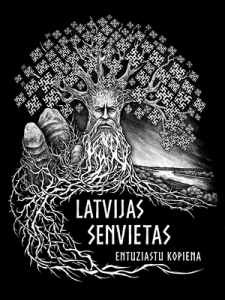One of the springs belonging to the Idols’ Furrow was localized and explored by the expedition of the Latvian Petroglyph Centre in summer, 2008, however, in the summer of 2011 within the Cult Identity project the explorers found other springs in the nearby forests which were facilitated and popular among people, however, now have been forgotten and have overgrown. Still nowadays the remains of rotten plank ways can be seen in the springs which remind of the facilities present here previously.
Small wood and individual clusters with big trees have survived from the former Idols’ Furrow. The biggest of the oaks grows about 300 m SW from Bajāri homestead, its circumference is 2.8 m.
Near Elkulejas (Elkalejas) homestead (not far from the site of the Idols’ Furrow) there is a monument to Neredzīgais Indriķis (Blind Indriķis) (1783–1828). He was born in the homestead which used to be here and spent all his life at the place in a family of serfs. In the fifth year of his life he lost his eye-sight as a result of small pox. However, he managed to become a tailor and costumier. Despite being blind he composed songs and wrote sermons. The poet was buried in the nearby Ģiborti cemetary.




